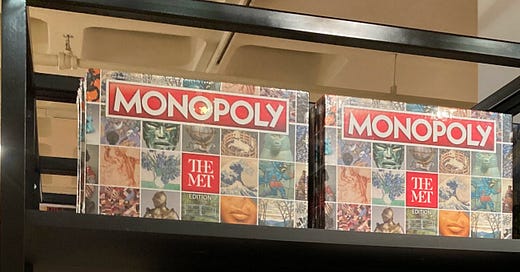I call it “Pulling a Bari,” but I could call it “Pulling a Michael,” or “Pulling a Michiko” or even “Pulling a Hilton,” though this last’s so past my readers might not catch the reference. Bari is Bari Weiss, the George Santos of Journalism and quon-dame “opinion writer and editor” at The New York Times. Two years ago she waltzed off in a huff because the Good Grey Lady wasn’t White enough. Since then Hyper-Bari’s been wandering a wilderness of her own making, with one failed project after another to bring her back into the limelight.
I’ve seen a few like that: Hilton Kramer, ex-chief art critic at the Times, con-founder of the New Criterion; Michael Brenson, quon-damn art critic at the New York Times, wasting his old-man rage on hapless graduate students; Michiko Kakutani, the Sumo wrestler of criticism, more adept at crushing opponents with her ass than her head.
It looks like Roberta Smith is lining up for the job. That’s the only way you’re going to make sense of her latest piece in the Times. You see, the Metropolitan Museum of Art is making a terrible, terrible mistake by accepting a donation of paintings and drawings by Philip Guston—including, of course, the Klan paintings by which Guston pushed Abstract Expressionist tradition straight into Punk. This won’t do, says Roberta. If the Met takes in more paintings by dead white guys there just won’t be any Met left for all the meritorious People of Color: “If I give you a gallery then everybody’s going to want a gallery, and then we’ll be right back where we started.” To prop up her argument Smith musters a quote from Philippe Lannes, ci-devant de Montebello. (We don’t do nobles here, Ma’am.) Philippe, as a rule, is more about “those people” pushing out the dead white males, which is why you’re likeliest to read about him in The New Criterion: “Hey, kids! Get off my museum!”.
The great Black Marxist Postmodernist critic Stuart Hall designated journalists as “secondary definers.” Their task, he wrote, was not to say what’s news but to offer a comprehensive framework for stuff passed down to them as news by the “primary definers,” say, the Press Services at he Metropolitan Museum of Art, or the Times Editorial Board. (In the past the two were interchangeable.)
The critics’ job is not to review a show, let alone not to; their job is to explain to the public why this or that show has been chosen for review. They’re not there for their competence in the field they cover, as Virgil Thomson pointed out many decades ago; they’re there to present a general understanding of the topic in terms and with concepts the layperson can follow, the journalistic equivalent of the Core Course.1 They need to project popular concepts onto matters that are, in fact quite arcane, and for which they have no particular competence, not out incompetence but as an avocation. The way George Santos lies.
Nassim Nicholas Taleb put it,
“Someone has to have read the book [seen the show/voted for the liar] to notice that a reviewer [art critic/politician] is full of baloney, so in the absence of skin in the game, reviewers such as Michiko Kakutani [Roberta Smith/the Federal Elections Commission] … can go on forever without anyone knowing they are either fabricating or drunk.”
Again according to Nassim,
“Book reviewers are bad middlemen; they are currently in the process of being disintermediated just like taxi companies (what some call Uberized).”2
Perhaps there’s more to it. Sooner or later there’s a reaction formation, not so much Paul on the road to Damascus as a Trump supporter desperate to have his bias reconfirmed. There’s a reason Hilton Kramer made a career of digging in on his earlier rejection of Jackson Pollock; and there’s a reason Brenson and Kakutani are obsessed with Postmodernism and its fancied denial of “Reality.” There’s a reason, likewise, that Smith, who years ago enthusiastically endorsed Guston, now finds in him the epitome of all the New Criterion hates: he’s modern, he’s political, he’s gutter style, he’s an Abstract Expressionist. Smith has displayed an unhealthy interest in the seamier sides of Right-wing punditry of late; I can’t wait for her to turn up on the masthead of the New Criterion, the Smerdyakov of the Art World. When Brenson tells a group of cowering graduate students, “Nobody tells me what to write,” it’s not a boast, it’s a cry for help.
WOID XXIII-04
Stuart Hall, Chas Critcher, Tony Jefferson, John Clarke and Brian Roberts, “The Social Production of News,” in Media Studies. A Reader, second ed., ed. Paul Marris and Sue Thornham (New York University Press, 2000), pp. 645-652; Virgil Thomson, "The Paper," A Virgil Thomson Reader (Boston: Houghton Mifflin 1981), 177-188.
Nassim Nicholas Taleb, Skin in the Game: Hidden Asymmetries in Daily Life (New York: Random House, 2018), p. 44.




